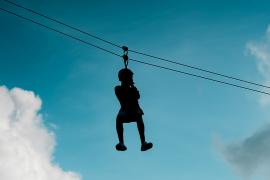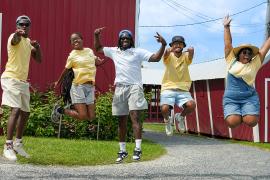Today the American Camp Association (ACA) is at an imperative strategic inflection point in its history. There could not be a more propitious time to set a new course for our Association beyond 2020. This past summer the ACA National Board adopted a bold and ambitious 2020–2024 strategic plan after engaging strategic planning consultants to undertake eight months of research with members, volunteer leaders, staff, donors, and other stakeholders.
ACA staff and volunteer leaders are now developing implementation plans for early actionable strategies related to 10 strategic plan priorities. Each of these actionable strategies is framed around four overarching strategic goals. Through this strategic plan, ACA will become the leading voice in advocating for all children and youth by establishing camp as a vital developmental and educational experience. We will advance the reach and relevance of camp experiences by expanding equitable access to camp by growing our community through diversity and inclusion. We will champion quality by driving continuous improvement field-wide through research-based best practices, industry-leading evaluation tools, and exceptional professional development. We will seize this moment in ACA’s history to accelerate its organizational growth and sustainability by improving organizational strength, capacity, and alignment.
Troubling trends today point to post-millennial youth needing social-emotional skill development as part of their whole-person education. Among our youth, smartphone ownership is nearly universal regardless of gender, race, ethnicity, and socio-economic background. Nearly half of teens surveyed in a national study said they are online almost constantly — a figure that has nearly doubled since 2015 (Anderson & Jiang, 2018). Another study found just 25 percent of teens spend time with friends in person (outside of school) on a daily basis (Lenhart, 2015). Where are young people learning and practicing in-person social skills, empathy, emotional regulation, and intuition? What is the lasting impact of the lack of in-person social and emotional interaction?
In a 2019 Pew Research Center study, 70 percent of teens reported anxiety and depression is a major problem among their peers, cutting across gender, racial, and socio-economic lines (Horowitz & Graf, 2019). Other research indicates the total number of teens who recently experienced depression increased 59 percent over the past decade (Geiger & Davis). The CDC is reporting significant increases in the percentage of teens who experienced persistent feelings of sadness or hopelessness over the past 10 years in addition to alarming increases in the percentage of teens who report having seriously considered or planned suicide.
Now more than ever before, immersive camp provides youth with essential educational and developmental experiences. Within these caring communities, campers and staff develop critical 21st-century social and emotional learning competencies, including relationship skills, responsible decision-making, and emotional regulation. They also learn to effectively communicate, collaborate, solve problems, and innovate. They acquire healthy attitudinal dispositions such as curiosity, persistence, mindfulness, and leadership traits. Camp is a human-powered learning environment, teaching and reinforcing positive risk-taking and citizenship skills. Every child, youth, and young adult deserves vital social-emotional learning experiences through high-quality, immersive programs. A National Commission on Social, Emotional, and Academic Development said, “Today we have the opportunity to get it fully right. Decades of scientific evidence point to the most important missing ingredient in classrooms and schools today: making sure that all children have the social, emotional, and academic skills they need to learn and thrive.” The report calls for a cross-sector coalition of those organizations willing to drive change, marshal resources, and share expertise. Through our new strategic plan, ACA is a leading out-of-school time partner responding to this call to action.
Ever onward together!
References
- Anderson, M. & Jiang, J. (2018, May 31). Teens, social media & technology 2018. Pew Research Center. Retrieved from pewinternet.org/2018/05/31/teens-socialmedia-technology-2018/
- Geiger, A. W. & Davis, L. (2019, July 12). A growing number of American teenagers — particularly girls — are facing depression. Pew Research Center. Retrieved from pewresearch.org/fact-tank/2019/07/12/a-growing-number-of-american-teenagers-particularly-girls-are-facing-depression/
- Horowitz, J. M. & Graf, N. (2019, February 20). Most U.S. teens see anxiety and depression as a major problem among their peers. Pew Research Center. Retrieved from pewsocialtrends.org/2019/02/20/most-u-s-teens-see-anxiety-and-depression-as-a-major-problem-among-their-peers/
- Lenhart, A. (2015, August 6). Teens, technology and friendships. Pew Research Center. Retrieved from pewinternet.org/2015/08/06/teens-technology-and-friendships/




